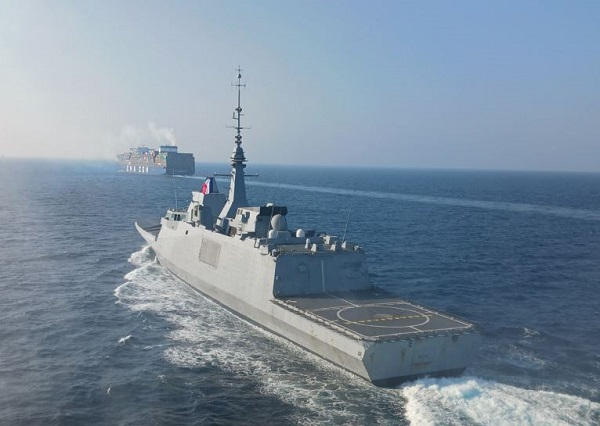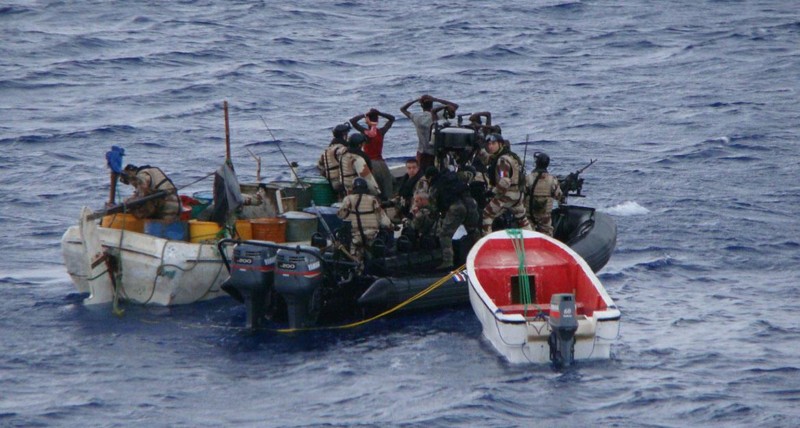
As expected, in its report published on February 4, the French global maritime safety expert center, the Maritime Information Cooperation & Awareness Center (MICA Center), observed a sharp decline in maritime security in 2024, with a significant increase in piracy incidents, particularly off the Horn of Africa, the explosion of drug trafficking, especially cocaine, and, of course, the attacks launched by Houthi rebels from Yemen against commercial traffic in the Red Sea and the Indian Ocean.
To ensure the protection of civilian ships, two naval operations were created: EUNAVFOR Aspides, in which France participates alongside several European partners, and Guardians of Prosperity, led under U.S. command.
Since the ceasefire in Gaza came into effect, the Houthis have considerably reduced the frequency of their attacks and assured that they would only target ships with links to Israel [which was already supposed to be the case…].
In any case, according to the MICA Center, the Houthis launched « about 700 munitions » throughout 2024, including about 40% ballistic missiles, 2% cruise missiles, 56% aerial drones [or remotely operated munitions], and 2% surface drones. These were aimed at « merchant ships » with links to Israeli, British, or American interests.
« This resulted in a total of 236 security incidents [detection of aerial drones or missiles, interception of an object by a military means, attack on a ship, or more directly on Israel], » the report states.
Clearly, these attacks have not hit all their targets. While the Houthis claimed responsibility for 200, the MICA Center identified only 124, « targeting that many ships. »
Among these, 27 ships were « very lightly impacted, either after being hit by a drone or due to missile impacts falling nearby at sea. » The report emphasizes that « all of them were able to continue their journey and had no injuries on board. »
On the other hand, 6 ships were « more severely damaged, » namely the MV Galaxy Leader [seized by air before being diverted], the MV Marlin Luanda [fire onboard], the MV Rubymar [sank, with 200 tons of fuel and 20,000 tons of phosphates on board], the MV Verbena [abandoned], the MV Sounion [saved at the last moment, with 150,000 tons of oil], the MV True Confidence, and the MV Tutor. It is noted that four sailors lost their lives.
As MP Yannick Chenevard had previously pointed out in his latest budget opinion on the French Navy’s credits, the munitions fired by the Houthis are not characterized by high precision. « The causes are both the rudimentary nature of these objects—the ballistic missiles, for example, have no terminal guidance—and the protection of merchant vessels by the frigates of the Aspides and Prosperity Guardian operations, » he had suggested.
What the MICA Center confirms. The « accuracy of Houthi attacks is around 7%. » The Yemeni rebels, recalls its commander, frigate captain Thomas Scalabre, were able to « fire up to 12 ballistic missiles at a ship » without hitting it.
Moreover, the MICA Center further highlights that 85% of the ships targeted had their AIS (Automatic Identification System) turned on. « When the AIS is off, only 5% of ships are hit, » it emphasizes, before concluding that « navigating with the AIS on exposes ships to a greater risk. »
That said, the Houthis use other operational methods to locate their targets. For instance, they use « bell-ringers, » which are fishing vessels tasked with reconnaissance and guidance missions, or even relaying threat messages via VHF.
« The Houthis have a significant stockpile of munitions for which they receive logistical support, among others, from Iran. This results in massive attacks, sometimes involving a dozen ballistic missiles aimed at a single ship. The recent decline in the number of attacks does not clearly challenge this scenario, » the MICA Center further notes.
Finally, the report emphasizes that Houthi attacks are accompanied by « insidious propaganda campaigns. » « Thus, 56% of their claims are completely false, and 20% are partially true. This constant disinformation aims to intimidate the maritime industry by skewing the perception of the Houthi offensive capacity, » it explains.
Although the accuracy of Houthi attacks is low, it is enough to have consequences on maritime traffic, which has been massively redirected to the Cape of Good Hope, much to Egypt’s displeasure, as the total revenue from Suez Canal tolls has collapsed. In addition, insurance premiums have « exploded, » now reaching 0.1% of the ship’s value, compared to 0.04% previously.
Source: opex360



